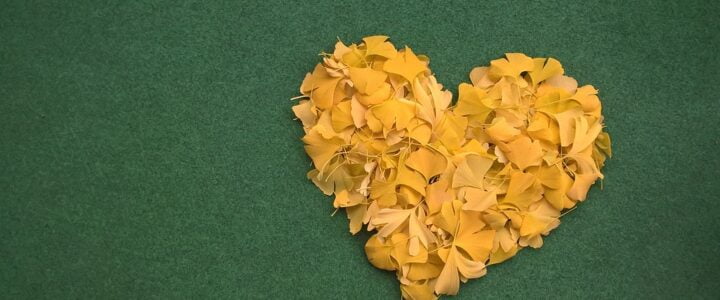Ginkgo is a large tree with fan-shaped leaves. Although Ginkgo is native parts of Asia, including China, Japan, and Korea, it has been grown in Europe since around 1730 and in the United States since around 1784.
The Ginkgo Biloba Tree has been referred to as a “living fossil.” This is because it is the only living member of the Ginkgoales family.
Its earliest fossils date back to 270 million years ago, which puts this tree on earth with the dinosaurs.
Global cataclysmic events caused a decrease in the number of Ginkgo and the extinction of large reptiles, who helped disperse the seeds, may have also contributed to this decline.
The Ginkgo disappeared from the North American fossil record approximately 7 million years ago and from Europe about 2.5 million years ago.
Sscientist believed it had become extinct, but it was later found in Japan. Engelbert Kaempfer, a German physician, and botanist found it in 1691.
It had survived in China in the monasteries and temple gardens. The Buddhist monks had cultivated the tree since the 1100s. It later spread by seed to Japan and Korea.
The ginkgo seeds were brought to Europe from Japan in the early 18th century and later that century to America. Most of these earlier trees were males.
.
Extreme examples of the ginkgo’s tenacity may be seen in Hiroshima, Japan, where six trees growing between 1–2 km from the 1945 atom bomb explosion were among the few living things in the area to survive the blast.
Although almost all other plants (and animals) in the area were killed, the ginkgos, though charred, survived and were soon healthy again, among other “Hibakujumoku” (trees that survived the blast).

The six trees are still alive: They are marked with signs at Housenbou (報専坊) temple (planted in 1850), Shukkei-en (planted about 1740), Jōsei-ji (planted 1900), at the former site of Senda Elementary School near Miyukibashi, at the Myōjōin temple.
If we look at the leaf shape of a Ginko Leaf we see one half of the hemisphere of the human brain. Indeed, the ancients saw this correlation and as a result, the leaf has been used as a brain food for centuries, both in medicine and in magic.
Ginkgo is considered an elder with high magical energy, and is used in longevity and age spells and is also considered an aphrodisiac and fertility herb that can be used in love and fertility spells.
One legend has it that if a girl sits under a male Ginkgo tree on a moonlit night, combs her hair and makes a wish, her wish will come true.
The first use of Ginko as a medicine is recorded in the late 15th century in China; among western countries, its first registered medicinal use was in Germany in 1965
The leaves are known to contain flavones glycosides, lactones, sitosterol, bioflavones, and anthocyanins. The main therapeutic function is the relaxation of blood vessels and stimulation of the circulatory system.
The Ginkgo Biloba seeds are also rich in minerals, fatty acids, and bioflavones. The seeds are especially popular in traditional Chinese medicine, and are called bai gou.
They are believed to act on the lung and kidneys and are used to treat the symptoms of asthmatic disorders, and all chest problems that produce thick phlegm.
The seeds of the Ginkgo tree are also believed to have a toning effect on the urinary system, and are useful in the treatment of excessive urination, or incontinence.
Subscribe to our monthly emails on health
Recent research has demonstrated that ginkgolide, a compound found in the leaves, is as effective as many standard pharmaceutical drugs currently used to treat irregular heartbeats.
Most research suggests that Ginkgo can improve memory, speed of thinking, and attention in adults.
Some evidence shows that taking ginkgo leaf extract by mouth modestly improves symptoms of Alzheimer’s, vascular, or mixed dementias.
There is some evidence that taking ginkgo leaf extract by mouth can improve color vision in people with retinal damage caused by diabetes.
Evidence suggests that using ginkgo leaf extract is associated with a decreased risk of developing ovarian cancer and may improve sexual problems caused by antidepressant drugs.
Ginkgo leaf extract also increases the distance people with poor blood circulation in their legs can walk without pain and will improve the quality of life in everything from general daily living and mood to sleep, and alertness in older people..
.
Considering the survival skills of this ancient tree, it is not surprising that it should have come to symbolize longevity, the undying life-force and hope against all odds.
The split nature of its leaves can imply a symbolism of duality as opposites are united in one form.
Ginkgo nuts are considered an elixir of life and are used to build potency, stamina and virility and are also associated with fertility,
More than any other tree, Ginkgo has become the beloved tree of philosophers and poets.
Ele Naturale


